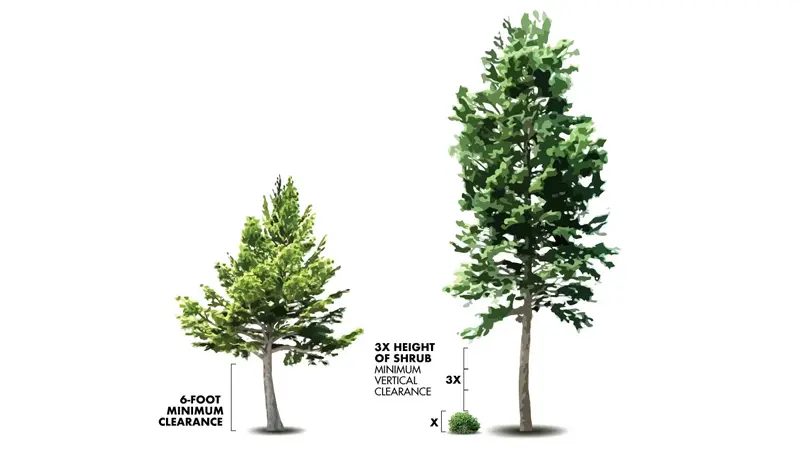Fire tends to travel fastest uphill by preheating dried vegetation from below and making it easier to ignite. The steeper the slope, the faster a fire will spread. Narrow canyons and saddles act as chimneys that trap heat, channel wind, and create erratic fire behavior. Ridges are also fire-prone. Heavily vegetated slopes are particularly hazardous.
Horizontal spacing:
● It is ideal to remove all plants within 5 feet of structures.
● Plant density can increase the further away from structures you get.
● Separate groups of plants with hardscaping to help slow down or prevent the spread of fire.
● On a mild slope (0-20% slope), space trees at least 10 feet apart from their dripline and space shrubs 2x their height from each other.
● On a medium slope (20-40%), space trees at least 20 feet apart and shrubs 4x their height.
● On a steep slope (over 40%), space trees at least 30 feet apart and shrubs 6x their height.
● Avoid planting trees in rows or hedges.

Vertical spacing:
● Remove tree branches that are within 6 feet from the ground on trees that are 18 feet or taller.
● If shrubs are under a tree, maintain a vertical clearance of 3x the shrub’s height between the top of the shrub to the lowest branch of the tree.
● When creating vertical space under trees, prioritize the tree's health by ensuring that the upper two-thirds of the tree has branches.

For more information on Fire Smart Landscaping from the Marin Master Gardeners, click here







